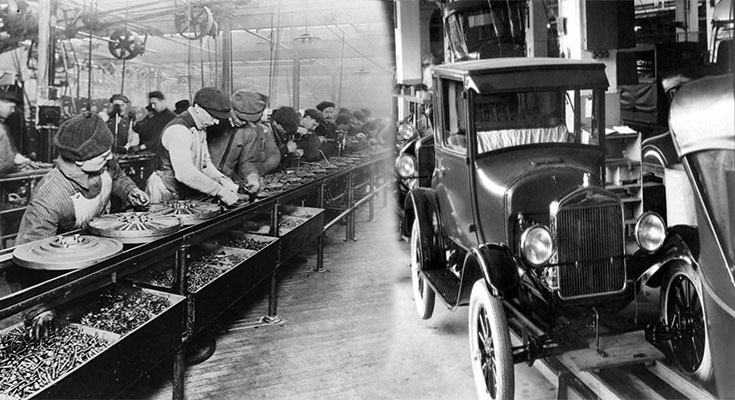The automobile assembly line is one of the most important inventions in American history. Without it, modern day U.S.A. would not exist. Over the years, the automobile assembly line has undergone several changes and improved efficiency. Read on to learn more about the assembly line and its development. Originally developed by Henry Ford, the assembly line is still one of the most important inventions of the Industrial Revolution. It’s important to note that the assembly line was not the only change during the Industrial Revolution.
Henry Ford’s assembly line
Henry Ford’s assembly line, or “moving assembly line,” is the key to modern manufacturing. This revolutionary process was created to create mass-produced automobiles with fewer parts and shorter assembly times. As the company began making cars on an assembly line, the cost of a car dropped from $850 in 1908 to $310 in 1926. In addition, the automobiles became more affordable, allowing them to reach the middle class instead of just the rich and famous.
William “Pa” Klann
The concept of the assembly line was first introduced to the Ford Motor Company by William “Pa” Klann. He had been to a slaughterhouse in Chicago, where he saw the “disassembly line” of dead animals moving down a conveyor. Klann was fascinated by the efficiency of having one person remove the same piece from a carcass. He presented the concept to Ford’s production head, Peter E. Martin, who was initially doubtful, but urged him to take action.
Eli Whitney
The American assembly line is a major milestone in American history, and Eli Whitney’s revolutionary ideas and inventions would play a vital role in its creation. Whitney’s ideas were fundamental to the growth of mass production in the United States, and would eventually lead to a new class of workers. Eli Whitney’s innovative ideas and inventions would change the world for generations. Here’s a look at the key moments that led to the development of the assembly line.
Samuel Colt
The assembly line is a keystone of the American manufacturing industry and has had a profound impact on the way the United States produces goods. Colt’s revolver revolutionized the manufacturing process in the United States and opened the West to white settlers. It also made it easier for emigrants to fight off Native Americans. While Colt was a visionary, he didn’t make the first gun to be mass produced, and he was not the first to use machines or interchangeable parts.
Henry Ford
Henry Ford and the assembly line industrial revolution has been credited with creating mass production of cars. Although the assembly line concept is not new to the automotive industry, it is only with Ford that the concept was first used in mass production. Ford began building factories for mass production and empowered this idea throughout the build process. By creating cars that were inexpensive to produce, Ford created a take it or leave it concept. Also, the availability of cheap, abundant electricity and mild steel led to a boom in manufacturing in the early 1900s. This lead to the advent of stamped steel, which later became a part of automobiles.
Ford Motor Company
The moving assembly line, which was invented by Henry Ford, changed the way work was done forever. First implemented on December 1, 1913, it was met with a lot of skepticism by many workers. But Ford’s success encouraged many other manufacturers to implement the assembly line, as it would lead to greater efficiency and productivity. And today, the Ford Motor Company is considered one of the most efficient auto manufacturers.


